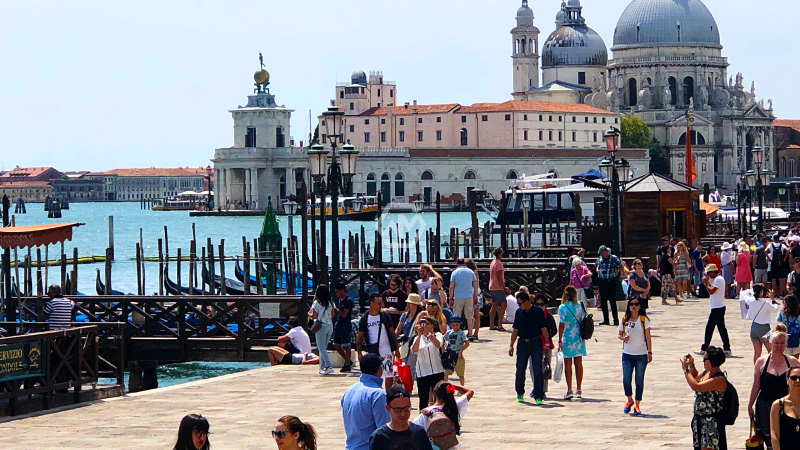- Tourist groups in Venice are now limited to a maximum of 25 people.
- Tourist guides are banned from using loudspeakers.
- Fines for non-compliance range from 25 to 500 euros.
Venice has introduced new regulations to mitigate the impact of tourism on the city. Starting Thursday, the size of tourist groups will be limited to 25 people.
The restrictions cover not only Venice’s city center but also the islands of Murano, Burano, and Torcello. Earlier this year, Venice pioneered a visitor payment system aimed at reducing daytripper congestion during peak periods. T
Venice Introduces Measures to Manage Tourist Crowds
Starting Thursday, Venice will enforce new regulations to manage the flow of tourists and reduce their impact on the city. Tourist groups will now be limited to 25 people, and tourist guides will no longer be allowed to use loudspeakers. These measures aim to protect the tranquility of residents and improve pedestrian mobility. Violations of these rules will incur fines ranging from 25 to 500 euros.
The new restrictions apply not only to Venice’s historic city center but also to the nearby islands of Murano, Burano, and Torcello. These areas, popular with tourists for their unique cultural and historical significance, have been struggling with overcrowding. The measures were initially set to be implemented in June but were delayed until August to allow for better preparation and communication.
In a separate initiative, Venice trialed a visitor payment system in April, becoming the first city in the world to do so. This pilot program aimed to discourage daytrippers during peak tourist periods and ran for 29 days before concluding in July. The results of this experiment are now under review, with authorities consulting on how to proceed with the project in the future.
Exemptions to the new group size limitation include children up to two years old and educational trips. These exceptions acknowledge the importance of educational tourism and the minimal impact of very young children. Local authorities are hopeful that these measures will help balance the needs of residents and tourists, preserving the city’s unique charm and heritage.
Venice’s new regulations are a crucial step toward preserving the city’s unique character and improving the quality of life for its residents. By managing tourist numbers and reducing noise pollution, these measures aim to create a more sustainable tourism model that benefits both visitors and locals.
“In April, Venice became the first city in the world to introduce a payment system for visitors in an experiment aimed at dissuading daytrippers from arriving during peak periods.”



